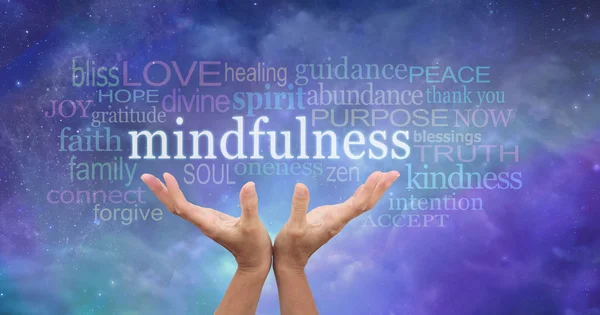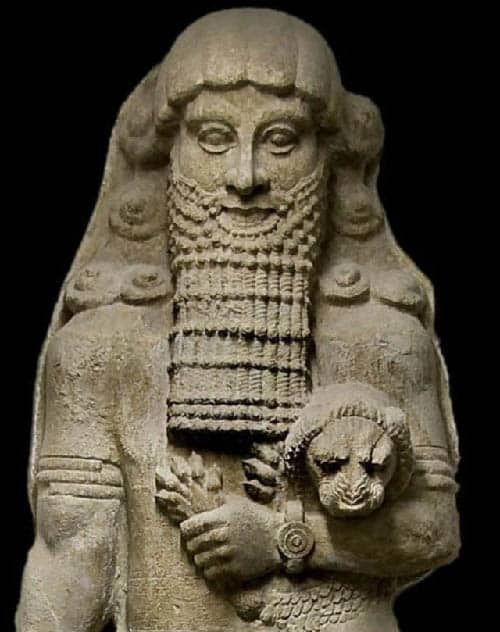
by Teodora | Nov 12, 2023 | Change
The buzz of mindfulness that has been going around for a couple of decades and is becoming louder and louder, I’ve done my fair share of trying am still not getting the expected benefits.
Big companies and schools are starting mindfulness programs because it supposedly increases happiness. Unless we have a generally agreed upon definition of happiness, we cannot really discuss the effects of mindfulness on it.
What is mindfulness?
Mindfully focusing on something at hand, one’s breath would do, is, as we are told by the self-improvement industry, a defence against stress. And stress is supposedly a killer, hence mindfulness is a life-saver. Whether stress is a killer is another question, depends on the definition of stress. If stress is defined as breaking down of molecules, or catabolic chemical reactions, Biology says that all the energy we have in our bodies is derived from catabolic reactions, hence, stress is the source of the energy we have at our disposal, which means that stress is life.
Does mindfulness feel good?
But I am more concerned with the question, does mindfulness actually feel good? To me, it doesn’t.
Mindfulness is about resisting the autopilot and instead being fully “in” the present moment. But what exactly are the benefits of the present moment? When I do that, I feel like I am depriving myself of one of the advantages human cognition has over other species: the ability to hold past and present and future simultaneously. In fact, having a concept of the future is unique to humans, going by what neuroscience has found. Cognitive science confirms that animals do not have a concept of the future like we do. As for the past, judging by how quickly animals recover from a near-death encounter with a predator and within minutes calmly graze grass as if nothing has happened, the past is past for them, gone and non-existent. Animals are in the “now” but I don’t strive after this kind of happiness.
On the face of it, our lives are often much more fulfilling lived outside the present than in it. After all, where are your visions and goals if not in the future? And how do you build on your experiences and learnings if you are not able to hold the past against the future and compare alternative scenarios? If staying “in the moment” actually stresses you, there is nothing against being elsewhere. Your brain is a lovely time- and distance travel-machine!
Mindfulness is often equated to the ability to focus and concentrate. But when I am stuck on a problem, the thing that gets me unstuck is not more focus on it, but just the opposite: distraction. Have you considered why so many “Eureca-moments” happen in a bath tub like with Archimedes or under the shower? Why sniff at automated actions when they are in fact shortcuts to efficiency? Also, focussing on your breath while running late on chores may actually add to the stress, at least in my case. I am not feeling better when I push deadlines or leave things undone, I am feeling worse.
While mindfulness meditations may indeed bring some benefits to depressed patients as research shows, there is no big evidence it brings happiness to ordinary people. And no, it is not going to protect you from your toxic boss! You have to actually deal with your problems.
Nothing against relaxation too, because this seems to be the one certain beneficial aspect of mindfulness meditation, provided this is your preferred relaxation technique. Everybody is different and for some people exercise is more relaxing than mindfulness. If you find that focussing on the tip of your nose actually stresses you by making you question whether you are doing it right, it is not you, it is just not your best approach to relaxation.
Try it, experiment with it, but, like with everything else, don’t overdo it! And if it does not appeal to you, this is OK too.

by Teodora | Jul 18, 2023 | Change
https://www.facebook.com/TeodoraRudolphChangeCoaching/posts/pfbid02mkthj53gA9EQpniNKHBunzyaKx51JCYRpDWYbeFG9FVy3eKSnGLRcju8NyTqCjoSl

by Teodora | Mar 5, 2023 | Change
Schlank und jugendlich aussehen … und beweglich sein und sich wohlfühlen, wer möchte das nicht?
Fühlen Sie sich wohl in Ihrer Haut und Ihrem Körper? Das Gewicht ist keine rein körperliche Sache. Kummerspeck und Schutzpanzer kommen von innen.
Mein Coaching mit Hypnose zum Idealgewicht löst die mentalen Aspekte des Körpergewichts. Der Rest löst sich von allein.
Mit Hypnose lassen sich Essensmuster und Gewohnheitsmuster ändern und die Sucht nach Lebensmitteln lösen. Oft genügen diese Massnahmen, um den Bauchumfang zu verringern. Zusätzlich kann ich auch ein virtuelles Magenband „installieren“, um die Essensmenge zu reduzieren. Alle Massnahmen sind mental und natürlich, denn die Arbeit macht Ihr eigenes Unterbewusstsein.
Spezialangebot zu Beginn des Sommers, um sich im Badeanzug wohlfühlen zu können:
5 Sitzungen zum Packagepreis von SFr. 1300.-
Jetzt buchen auf info@teodorarudolph.com
Disclaimer:
Dies ist ein Angebot, um Ihr Körpergewicht zu regulieren und ist kein Ersatz für eine allfällige ärztliche Behandlung.

by Teodora | Feb 21, 2023 | Change
Gilgamesch ist die älteste Geschichte der Menschheit. Gilgamesch ist der erste Held der Literatur. Das Epos entstand 2,5 Tausend Jahre vor Christus und wurde erzählt und nacherzählt. Auf Tontafeln wurde es bereits 1700 Jahre vor Christus niedergeschrieben, tausend Jahre vor der “Ilias”. Jahrtausende lang wurde seine Geschichte erzählt, dann ist er total in Vergessenheit geraten. Über 1000 Jahre lang hat keiner den Namen Gilgamesch in Erinnerung gehabt. Bis 1870 im Irak einige Tontafeln ausgegraben wurden und das Epos von Gilgamesch wieder zusammen gefügt wurde. Gilgamesch und seine Suche nach dem ewigen Leben sind wieder berühmt worden. Scheinbar ist der Jugendwahn, den wir heute sehen, so alt wie die Menschheit selbst.
Der Held
Gilgamesch
Die Figur basiert auf einem echten Menschen, auf dem König von Uruk in Mesopotamien, im heutigen Irak. Er ist 1/3 Mensch, 2/3 Gott Gilgamesh, der ideale Mann: stark, mutig, klug und schön.
Der Schatten
Gilgamesh ist arrogant und wird von seinem Volk gefürchtet. Obwohl er in Körper und Geist gottähnlich ist, regiert er in seinem Reich als grausamer Despot. Das Volk von Uruk wendet sich an die Götter und bitten um Erlösung von Gilgamesch.
Die Nemesis
Enkidu
Die Götter erhören das Volk und entscheiden Gilgamesch in Schach zu halten, indem sie ihm einen Rivalen namens Enkidu erschaffen. Er soll nach Uruk gehen und Gilgamesch herausfordern. Enkidu ist ein wilder Mann, er ist mehr Tier als Mensch und ist innig mit dem Tierreich verbunden. Da er alle Tiere aus den Fallen befreit, empören sich die Jäger und wenden sich an die Götter um Hilfe. Die Götter senden darauf eine Frau, die Enkidu mit ihren Liebeskünsten besänftigen soll. Innerhalb von 7 Liebesnächten wird Enkidu so gezähmt, dass, als er bei Gilgamesch ankommt, er so sanft ist, dass er ihn statt herauszufordern befreundet.
Verbündete
Enkidu wird zum Begleiter, Bruder und Verbündeten von Gilgamesch. Zusammen feiern sie viele Heldentaten und Siege. Sie bekämpfen viele Monster, womit sie die Götter verärgern. Der Höhepunkt ist die Tötung des Himmelstieres. Das geschah so: die Göttin der Liebe und des Krieges Isthar bietet sich Gilgamesch als Frau an. Er lehnt sie jedoch mit der Begründung ab, sie habe das Leben ihrer vorigen Liebhaber zerstört. Aus Rache lässt Isthar den Stier des Himmels auf Uruk los. Der Stier kommt vom Himmel herab und bringt sieben Jahre Hungersnot mit sich. Enkidu und Gilgamesch töten ihn jedoch: Enkidu packt ihn an den Hörnern und Gilgamesch schlägt ihm mit seinem Schwert den Kopf ab. Die Götter haben genug, das war nicht der Plan, sie beschliessen Enkidu sterben zu lassen. Nach 12 Tagen qualvoller Krankheit ist Enkidu tot.
Die Höhle
Gilgamesch ist gebrochen und fällt in eine tiefe Trauer. Nicht nur hat er seinen Freund und Verbündeten verloren, er wird auch mit seiner eigenen Sterblichkeit konfrontiert. Das macht ihm Angst und er beschliesst, sich auf die Suche nach dem ewigen Leben zu machen.
Der Mentor
Utnapishtim
Gilgamesch geht zu Utnapishtim an den Rand der Welt. Utnapishtim ist unsterblich geworden, nachdem er eine grosse Sintflut überlebt hat. Utnapishtim erzält Gilgamesch die Geschichte der Sintflut, als die Götter die Menschen zuerst vernichten wollten, es sich dann aber anders überlegten, so dass, auch wenn die Menschen sterben, die Menschheit selbst überlebt. Einer der Götter warnte daher Utnapishtim und brachte ihm bei, ein riesiges Boot zu bauen, in dem seine Familie und die Samen jeder lebenden Kreatur Platz hatten. Als das Wasser endlich zurücktrat, wurde Utnapishtim mit dem ewigen Leben belohnt.
Die Prüfung und die Suche
Utnapishtim erzählt Gilgamesch von einer Wunderpflanze, die in einem tiefen Graben am Boden des Meeres zu finden sei. Wer von dieser Pflanze isst, wird wieder jung. Gilgamesch macht sich auf den Weg und findet die Pflanze. Anstatt gleich davon zu essen, beschliesst er sie nach Uruk zurückzubringen und mit seinem Volk zu teilen. Auf dem Rückweg kommt jedoch eine Schlang aus einem Brunnen hervor und stiehlt die Pflanze. Die Schlange isst, wirft ihre alte Haut ab und wird wieder jung.
Die Rückkehr und die Transformation
Gilgamesch kehrt mit leeren Händen nach Uruk zurück, niedergeschlagen und gebrochen. Seine Arroganz hat er jedoch auch verloren. Er weiss nun, dass er sterblich ist, dass er nicht ewig leben kann; er weiss jedoch auch, dass die Menschheit über den Einzelnen hinaus weiter lebt und in diesem Sinne ewig ist.

by Teodora | Jan 19, 2023 | Change
The legend of the eagle at 40 is a story that speaks to the power of personal transformation. According to the legend, at the age of 40, the eagle begins to feel the weight of its years and the limitations of its abilities. It realizes that it can no longer fly as high or as fast as it once did, and that its feathers are dull and worn.
In response to this realization, the eagle embarks on a journey of transformation. It begins by climbing to the top of a mountain and facing the sun. The eagle then proceeds to pluck out all of its feathers, one by one, until it is completely bald. This process is said to be extremely painful, but the eagle persists.
Once the eagle has plucked out all of its feathers, it then jumps off the mountain and begins to freefall towards the ground. But instead of crashing to its death, the eagle begins to transform. Its beak and talons sharpen, its eyesight and hearing become keener, and new, shiny feathers begin to grow back. The eagle then soars back into the sky, stronger, faster and more beautiful than ever before.
This story is a powerful reminder that personal transformation is not always easy, and that it requires sacrifice, hard work, and the courage to face our own limitations.
It tells us that in order to truly transform, we must be willing to let go of who we are and embrace a new identity. This process can be painful, but it is essential for growth and progress. The legend of the eagle at 40 is a reminder that no matter our age, we have the power to transform ourselves and become the best version of ourselves.
The legend of the eagle at 40 bears some resemblance to the epic of Gilgamesh, one of the earliest and most important works of world literature. In the epic, Gilgamesh, a demigod and king, undertakes a journey to find the secret of immortality after the death of his friend Enkidu. Along the way, he faces many challenges and ultimately learns valuable lessons about the nature of human existence and the inevitability of death.
Similarly, the eagle in the legend of the eagle at 40 also undertakes a journey of transformation, facing the limitations of its own existence and ultimately emerging stronger and renewed. Both the eagle and Gilgamesh must confront their own mortality and accept that change is necessary for growth and progress. In Gilgamesh’s case, he learned that immortality is not possible for humans, but by facing his own mortality and embracing the impermanence of life, he becomes a better ruler and a better person.
In this sense, the legend of the eagle at 40 can be seen as a metaphor for the human journey towards self-acceptance and understanding of our own mortality, much like the epic of Gilgamesh. It illustrates the transformative power of facing our own limitations and understanding that change is necessary for growth and progress, this is a common theme in human mythology and literature across cultures and time.





Recent Comments